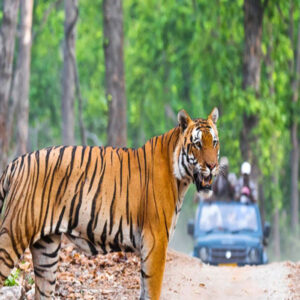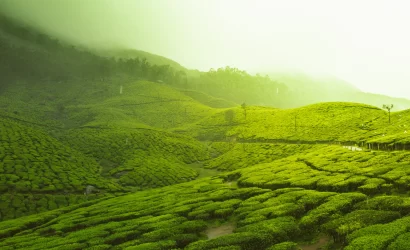History
Eturnagaram Wildlife Sanctuary, located in Telangana's Mulugu district, is one of the state’s oldest protected areas, established in 1953. Spanning around 806 sq km, it lies along the banks of the Godavari River and is part of the Eastern Ghats, featuring dry deciduous forests with teak, bamboo, and mahua trees. The sanctuary hosts diverse wildlife, including leopards, sloth bears, sambar deer, nilgai, wild boar, and various bird species like peacocks and parakeets. Reptiles such as pythons and crocodiles are also present. Eturnagaram is ecologically important as a corridor for animal movement across state borders. It is also culturally significant, being home to indigenous Koya tribes and ancient megalithic sites. The sanctuary is about 110 km from Warangal and best visited between October and April. Its rich biodiversity and tribal heritage make it a key destination for nature and culture enthusiasts alike.
Flora and Fauna:
Eturnagaram Wildlife Sanctuary in Telangana boasts rich biodiversity, especially in its flora and fauna. The sanctuary is primarily covered by dry deciduous forests, with dominant tree species including teak, bamboo, mahua (Madhuca indica), Terminalia, and Pterocarpus marsupium. These forests provide ideal habitats for a wide range of wildlife. Among the fauna, the sanctuary supports mammals such as leopards, sloth bears, sambar deer, chital (spotted deer), nilgai, wild boar, and occasionally tigers. It also hosts several species of reptiles, including pythons, cobras, and crocodiles found in the Godavari River that flows through the area. The birdlife is abundant, with peacocks, parakeets, hornbills, eagles, and vultures frequently sighted. This diverse ecosystem is supported by the Godavari River and the forested terrain, making Eturnagaram an important ecological zone in the Eastern Ghats and a key sanctuary for both resident and migratory species.

Specialities:
ChatGPT said:
Eturnagaram Wildlife Sanctuary is renowned for its unique combination of rich biodiversity and cultural heritage. Situated along the Godavari River, it serves as a crucial wildlife corridor in the Eastern Ghats, supporting diverse species in a dry deciduous forest ecosystem. The sanctuary is home to rare animals like sloth bears, leopards, and nilgai. It also houses tribal communities, particularly the Koya tribe, who live in harmony with nature.
Ancient megalithic burial sites within the forest add archaeological interest. The blend of scenic beauty, tribal culture, and ecological importance makes Eturnagaram a distinctive and valuable conservation area in Telangana.
Activities:
Visitors to Eturnagaram Wildlife Sanctuary can enjoy activities such as wildlife spotting, birdwatching, nature walks, and river-side picnics along the Godavari. Exploring tribal villages and ancient megalithic sites adds a cultural dimension. The serene forest environment offers opportunities for eco-tourism, photography, and guided treks through diverse natural landscapes.
Best time to visit:
The best time to visit Eturnagaram Wildlife Sanctuary is between October and April, when the weather is pleasant and suitable for outdoor activities. During these months, wildlife sightings are more frequent, and the forest is lush post-monsoon. Summers can be extremely hot, while monsoons may limit accessibility and visibility.
How To Reach:
By Road
-
From Warangal: About 110 km. Regular buses and taxis are available.
-
From Hyderabad: About 250 km via NH163. Best option for private vehicles or tourist buses.
By Train
-
Nearest Station: Warangal Railway Station
Connected to major cities like Hyderabad, Vijayawada, and Visakhapatnam.
From Warangal, take a taxi or bus to Eturnagaram.
By Air
-
Nearest Airport: Rajiv Gandhi International Airport, Hyderabad (Approx. 250 km away)
From the airport, take a cab or reach Warangal by train/bus, then proceed to the sanctuary by road.


